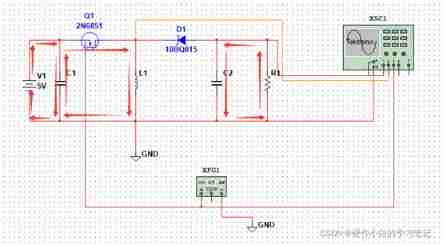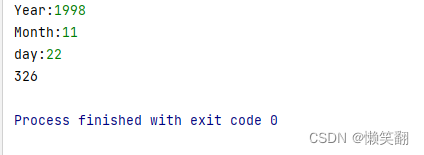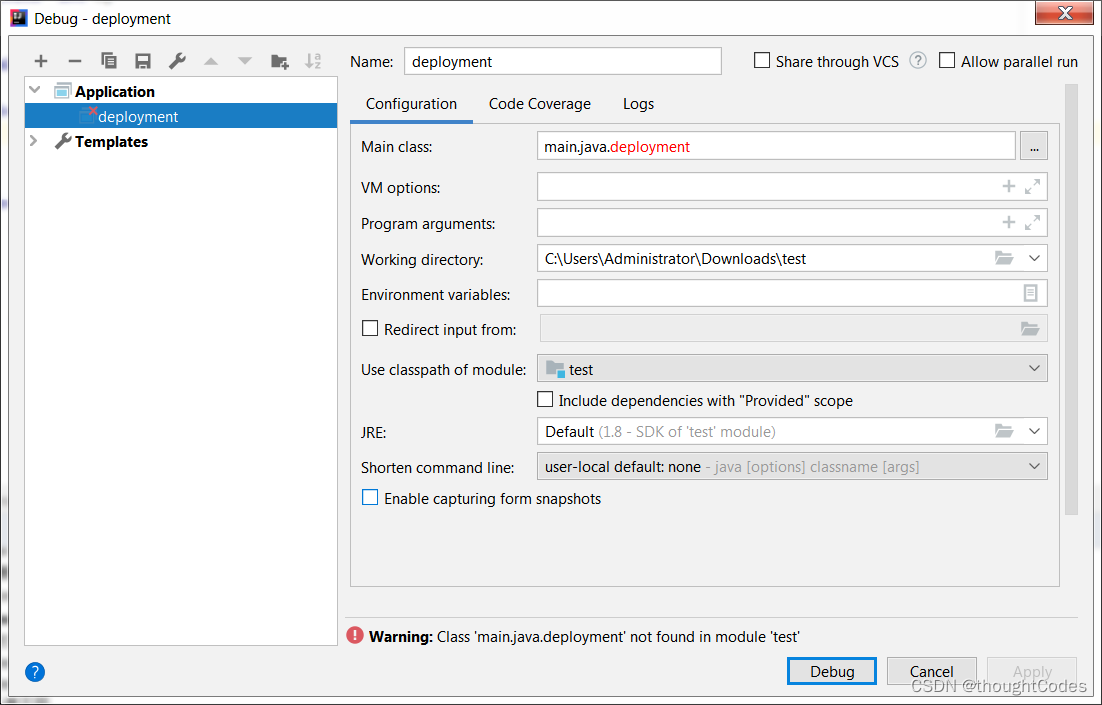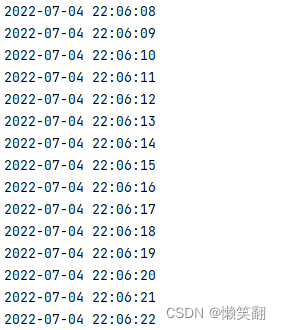当前位置:网站首页>Illustration of eight classic pointer written test questions
Illustration of eight classic pointer written test questions
2022-07-05 08:33:00 【Life is made by oneself ~】
List of topics
The first question is
int main()
{
int a[5] = {
1, 2, 3, 4, 5 };
int *ptr = (int *)(&a + 1);
printf( "%d,%d", *(a + 1), *(ptr - 1));
return 0; }
// What is the result of the program ?
a And ptr Memory map of :
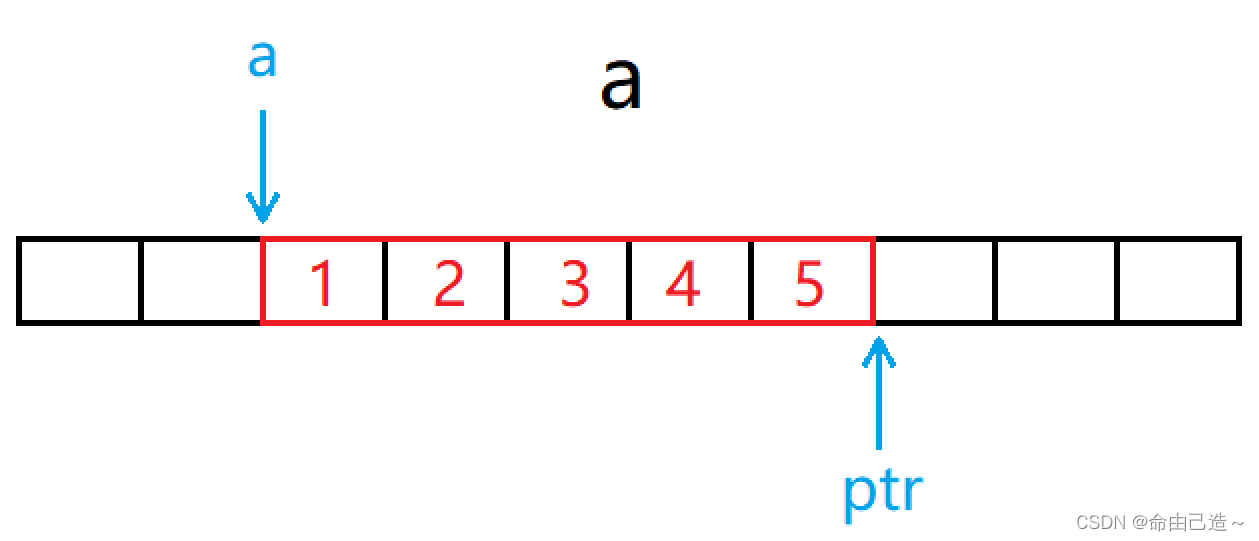
a + 1 and ptr - 1: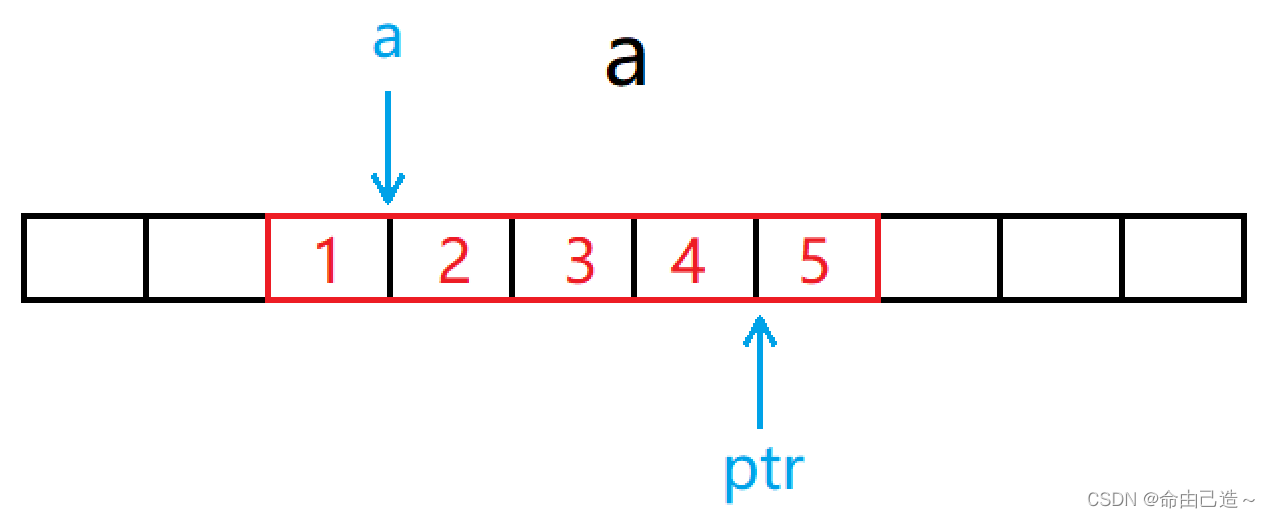
After de quotation, the answer is :
2,5
The second question is
struct Test
{
int Num;
char* pcName;
short sDate;
char cha[2];
short sBa[4];
}*p = 0x100000;
// hypothesis p The value of is 0x100000. What are the values of the expressions in the following table ?
int main()
{
printf("%p\n", p + 0x1);
printf("%p\n", (unsigned long)p + 0x1);
printf("%p\n", (unsigned int*)p + 0x1);
return 0;
}
This problem involves the calculation of the size of the structure , If you have forgotten friends, you can have a look : Structure / Calculation of the size of the consortium
The size of this structure is 20 byte
The first thing to know about this problem is Pointer plus integer depends on pointer type , And integer plus integer can be added directly p+0x1 Just skip one p Type size , Equivalent to +20(unsigned long)p + 0x1 Add two integers , Direct addition (unsigned int*)p + 0x1 skip p Type size , amount to +4
The final answer is :
0x100020
0x100001
0x100004
Third question
int main()
{
int a[4] = {
1, 2, 3, 4 };
int *ptr1 = (int *)(&a + 1);
int *ptr2 = (int *)((int)a + 1);
printf( "%x,%x", ptr1[-1], *ptr2);
return 0;
}
ptr1 Same as the first question , It should be noted that ptr2,(int)a + 1 Medium +1 Is to add a byte , An integer has four bytes ,a It's the first element address ,(int)a + 1 after :
And because ptr2 yes int* type , So look back four bytes when dereferencing :
After the small end storage is taken out, it will be 02 00 00 00
The final answer is :
4, 2000000(16 Hexadecimal does not print the previous 0)
Fourth question
int main()
{
int a[3][2] = {
(0, 1), (2, 3), (4, 5) };
int *p;
p = a[0];
printf( "%d", p[0]);
return 0;
}
There's a trap here : Comma expression
Real memory map :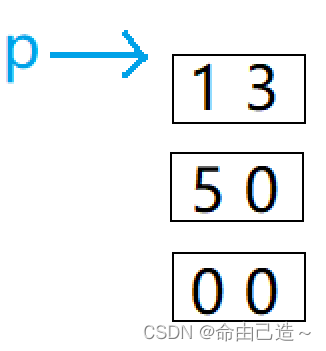
The final answer is :
1
Fifth question
int main()
{
int a[5][5];
int(*p)[4];
p = a;
printf( "%p,%d\n", &p[4][2] - &a[4][2], &p[4][2] - &a[4][2]);
return 0;
}
a[4][2] It's easy to find , however p[4][2] Hard to find ,p The type of pointer is int(*)[4],p[4][2] Can be seen as :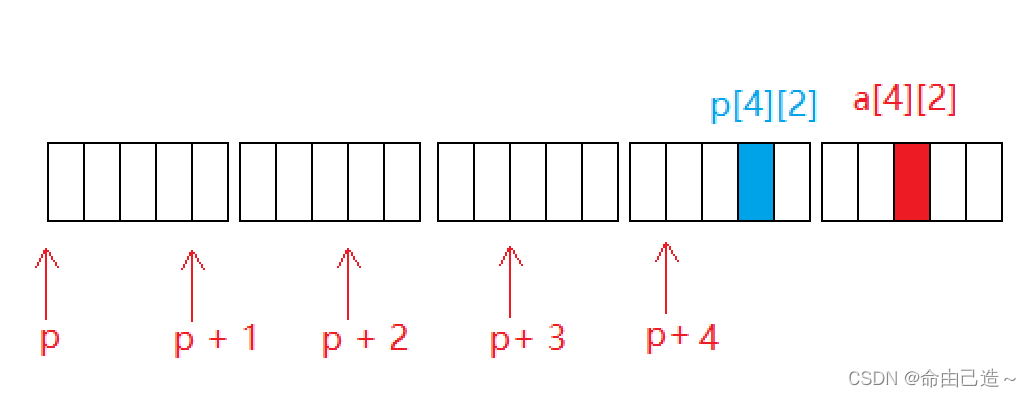
&p[4][2] - &a[4][2] The result is -4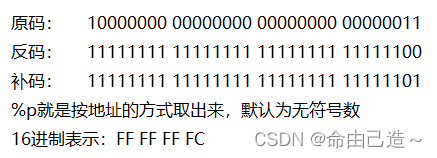
So the answer is :
FF FF FF FC , -4
Sixth question
int main()
{
int aa[2][5] = {
1, 2, 3, 4, 5, 6, 7, 8, 9, 10 };
int* ptr1 = (int*)(&aa + 1);
int* ptr2 = (int*)(*(aa + 1));
printf("%d,%d", *(ptr1 - 1), *(ptr2 - 1));
return 0;
}
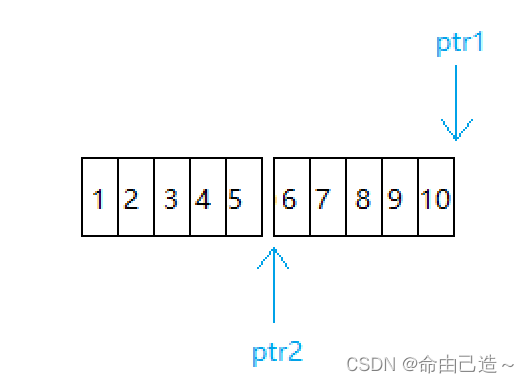
answer :
10, 5
Question seven
int main()
{
char* a[] = {
"work","at","alibaba" };
char** pa = a;
pa++;
printf("%s\n", *pa);
return 0;
}
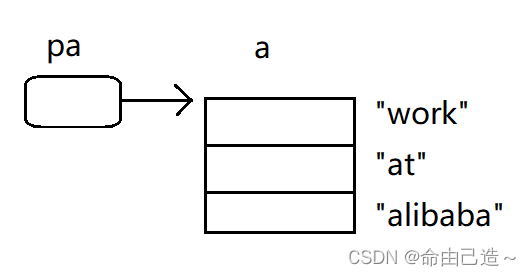
pa++ Backward pointing a Point to "at"
The answer for :
“at”
The eighth question
int main()
{
char* c[] = {
"ENTER","NEW","POINT","FIRST" };
char** cp[] = {
c + 3,c + 2,c + 1,c };
char*** cpp = cp;
printf("%s\n", **++cpp);
printf("%s\n", *-- * ++cpp + 3);
printf("%s\n", *cpp[-2] + 3);
printf("%s\n", cpp[-1][-1] + 1);
return 0;
}
First draw the picture 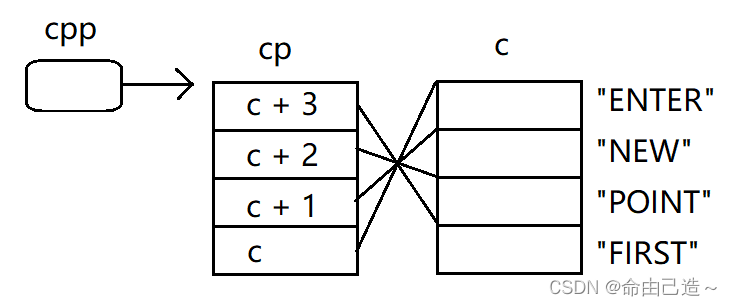
Because there is ++ and - -, Will change the result of the next step , So we should analyze step by step
1️⃣**++cpp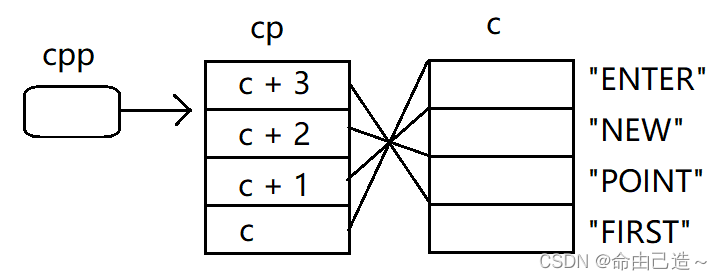
Pointing to "POINT"
2️⃣*-- * ++cpp + 3
①++cpp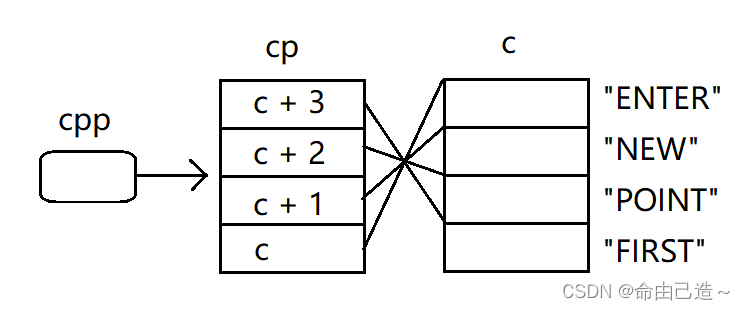
②-- * ++cpp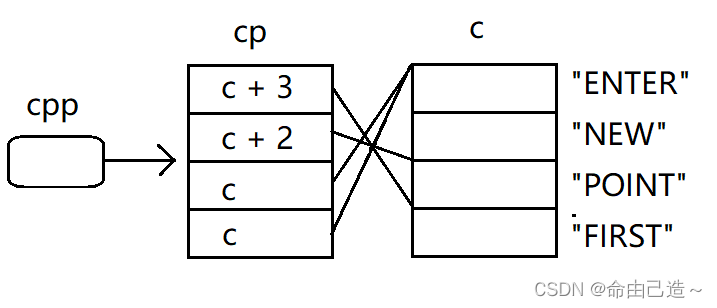
③*-- * ++cpp + 3
Point to "ER"
3️⃣*cpp[-2] + 3
 Point to
Point to "ST"
4️⃣cpp[-1][-1] + 1
①cpp[-1]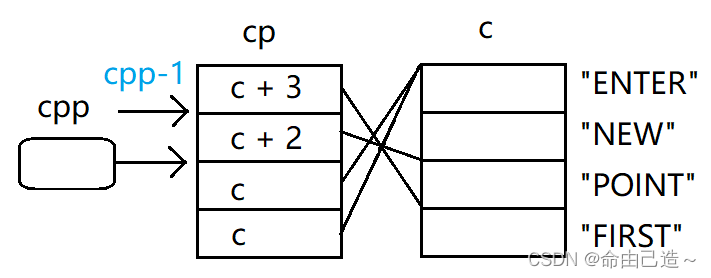
②cpp[-1][-1]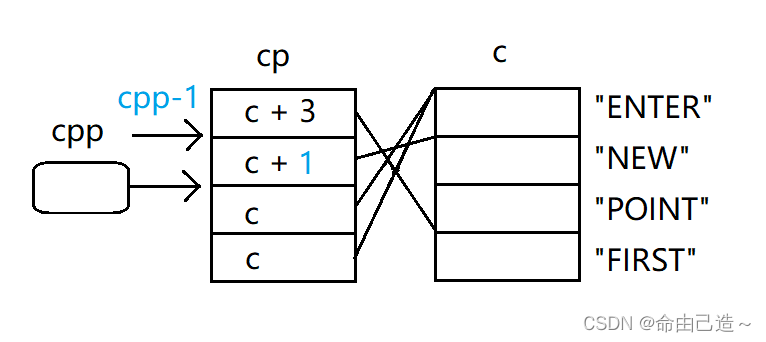
③cpp[-1][-1] + 1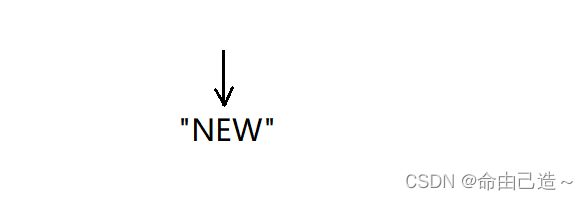
Point to "EW"
So the answer is :
POINT
ER
ST
EW
边栏推荐
- Ble encryption details
- Brief discussion on Buck buck circuit
- 猜谜语啦(3)
- PIP installation
- [nas1] (2021cvpr) attentivenas: improving neural architecture search via attentive sampling (unfinished)
- On boost circuit
- Matlab tips (28) fuzzy comprehensive evaluation
- Stm32--- systick timer
- DCDC circuit - function of bootstrap capacitor
- Explore the authentication mechanism of StarUML
猜你喜欢
随机推荐
Keil use details -- magic wand
[cloud native | learn kubernetes from scratch] III. kubernetes cluster management tool kubectl
猜谜语啦(9)
319. 灯泡开关
List of linked lists
Sword finger offer 06 Print linked list from end to end
Agile project management of project management
Infected Tree(树形dp)
Run菜单解析
Go dependency injection -- Google open source library wire
QEMU STM32 vscode debugging environment configuration
FIO测试硬盘性能参数和实例详细总结(附源码)
亿学学堂给的证券账户安不安全?哪里可以开户
Example 005: three numbers sorting input three integers x, y, Z, please output these three numbers from small to large.
[noi simulation] juice tree (tree DP)
Bluebridge cup internet of things basic graphic tutorial - GPIO input key control LD5 on and off
Array integration initialization (C language)
Problem solving: interpreter error: no file or directory
STM32 --- configuration of external interrupt
STM32---ADC


